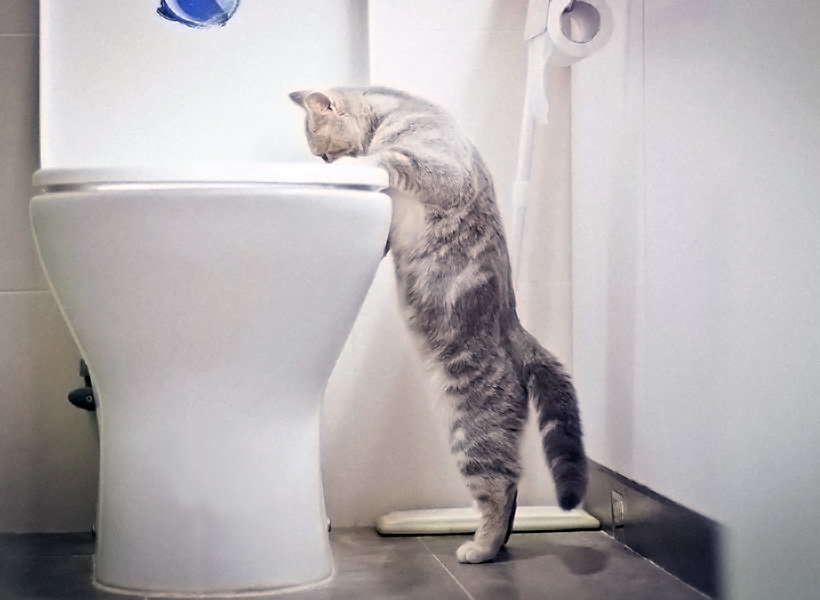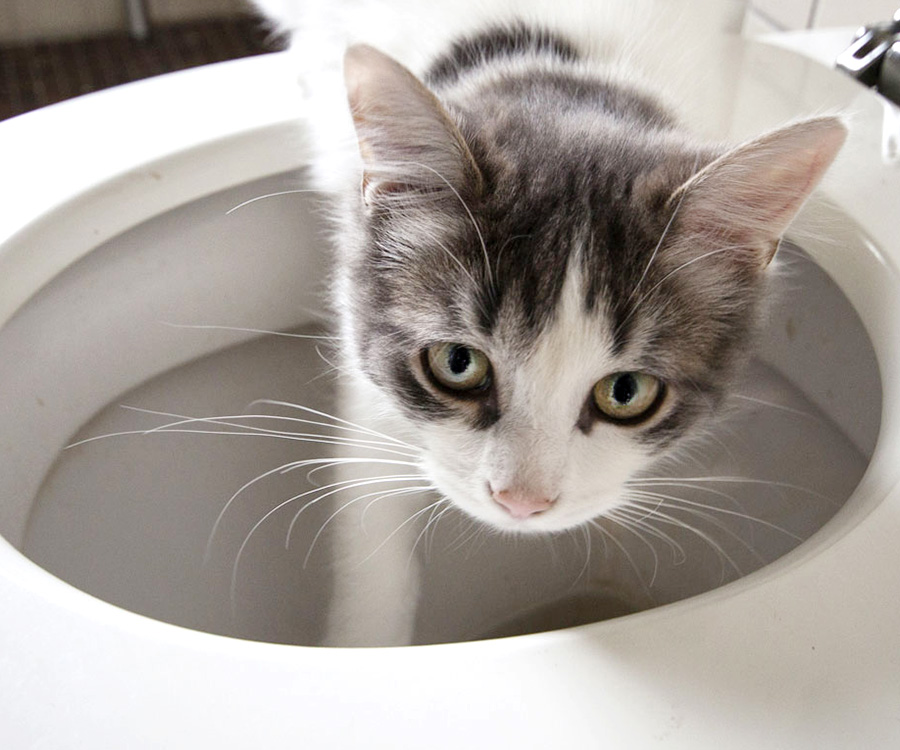Best Explanations to Stay away from Flushing Animal Waste Down the Toilet
Best Explanations to Stay away from Flushing Animal Waste Down the Toilet
Blog Article
Just how do you really feel when it comes to 10 Things You Should Never Flush Down The Toilet?

When it comes to taking care of waste, especially animal waste, lots of people often turn to the practical alternative of flushing it down the toilet. Nevertheless, this apparently very easy solution can have serious consequences for the environment and public health. In this article, we'll discover why flushing pet waste down the bathroom is a negative idea and give alternative techniques for correct disposal.
Intro
Correct garbage disposal is essential for keeping environmental sustainability and public health. While it may seem safe to flush animal waste down the commode, it can cause various issues, both for the setting and human health.
Risks of flushing animal waste
Ecological impact
Purging animal waste presents dangerous bacteria and virus right into rivers, which can adversely affect marine ecological communities. These microorganisms can contaminate water resources and harm marine life, interrupting fragile communities.
Public health worries
Pet waste contains dangerous microorganisms such as E. coli and Salmonella, which can present serious wellness dangers to humans. Purging animal waste down the bathroom can pollute water supplies, leading to the spread of diseases and infections.
Alternatives to flushing
As opposed to purging pet waste down the commode, there are several alternative disposal techniques that are a lot more eco-friendly and hygienic.
Composting
Composting animal waste is an environment-friendly means to dispose of it. By composting, organic matter is broken down right into nutrient-rich dirt, which can be utilized to fertilize gardens and plants.
Land fill disposal
Dealing with pet waste in a garbage dump is another choice. While not as eco-friendly as composting, it is a more secure alternative to flushing, as it protects against the contamination of water sources.
Family pet garbage disposal systems
There are specific pet dog waste disposal systems offered that securely and hygienically get rid of pet waste. These systems often utilize enzymes to break down waste and remove odors.
Steps to appropriate pet garbage disposal
To ensure correct disposal of pet waste, adhere to these steps:
Scooping and bagging waste
Frequently scoop and bag animal waste utilizing naturally degradable bags. This protects against waste from infecting the atmosphere.
Utilizing assigned waste containers
Dispose of bagged animal waste in designated waste bins, such as garden compost containers or garbage dump bins. Avoid flushing it down the toilet in all expenses.
Cleaning up litter boxes and pet locations on a regular basis
Frequently clean can and animal areas to stop the buildup of waste and microorganisms. Use pet-safe cleansing products to preserve health.
Benefits of appropriate disposal approaches
Taking on proper disposal methods for pet waste provides several advantages:
Reduced environmental pollution
Appropriate disposal methods minimize the risk of environmental pollution, shielding waterways and ecological communities from contamination
Reduced danger of water contamination.
By staying clear of flushing animal waste down the bathroom, the threat of water contamination is considerably minimized, guarding public health.
Boosted sanitation and hygiene
Appropriate disposal techniques advertise much better sanitation and hygiene, developing a more secure setting for both human beings and pets.
Conclusion
In conclusion, purging pet waste down the bathroom is damaging to the environment and public health. click here By adopting different disposal techniques and complying with proper waste monitoring methods, we can reduce the adverse effect of pet waste and contribute to a cleaner, much healthier planet.
What To Do With Dog Poo – The Do's And Don'ts Of Disposing Of Faeces
Dog poo bins
Some councils provide dedicated dog waste bins in popular dog-walking areas that can take dog poo that has been bagged but you can legally dispose of dog waste in any public litter bin, as long as it is securely bagged. This also applies to your wheelie bin at home.
Do not flush
Water companies do not recommend flushing dog faeces down the toilet because certain parasites can survive the water processing treatment and are potentially harmful to humans. You should also never consider flushing dog poo that has been bagged down the toilet as the bags will not break down and instead create severe blockages in the sewage system.
In the woods
The Forestry Commission promotes a ‘stick and flick’ method for dealing with waste in the woods. This means finding a stick and using it to flick any poo from off the path so that it is out of the way of other walkers. You could also bury it as long as it is not in an area where there might be livestock.
Livestock
Parasites found in dog poo can be transmitted to livestock if they inadvertently eat infected faeces that has been left on grazing land. This could result in the death of sheep or abortion in cattle so you should always make sure you pick up your dog’s waste in fields where livestock could be present.

Frequently clean can and animal areas to stop the buildup of waste and microorganisms. Use pet-safe cleansing products to preserve health.
Benefits of appropriate disposal approaches
Taking on proper disposal methods for pet waste provides several advantages:
Reduced environmental pollution
Appropriate disposal methods minimize the risk of environmental pollution, shielding waterways and ecological communities from contamination
Reduced danger of water contamination.
By staying clear of flushing animal waste down the bathroom, the threat of water contamination is considerably minimized, guarding public health.
Boosted sanitation and hygiene
Appropriate disposal techniques advertise much better sanitation and hygiene, developing a more secure setting for both human beings and pets.
Conclusion
In conclusion, purging pet waste down the bathroom is damaging to the environment and public health. click here By adopting different disposal techniques and complying with proper waste monitoring methods, we can reduce the adverse effect of pet waste and contribute to a cleaner, much healthier planet.
What To Do With Dog Poo – The Do's And Don'ts Of Disposing Of Faeces
Dog poo bins
Some councils provide dedicated dog waste bins in popular dog-walking areas that can take dog poo that has been bagged but you can legally dispose of dog waste in any public litter bin, as long as it is securely bagged. This also applies to your wheelie bin at home.
Do not flush
Water companies do not recommend flushing dog faeces down the toilet because certain parasites can survive the water processing treatment and are potentially harmful to humans. You should also never consider flushing dog poo that has been bagged down the toilet as the bags will not break down and instead create severe blockages in the sewage system.
In the woods
The Forestry Commission promotes a ‘stick and flick’ method for dealing with waste in the woods. This means finding a stick and using it to flick any poo from off the path so that it is out of the way of other walkers. You could also bury it as long as it is not in an area where there might be livestock.
Livestock
Parasites found in dog poo can be transmitted to livestock if they inadvertently eat infected faeces that has been left on grazing land. This could result in the death of sheep or abortion in cattle so you should always make sure you pick up your dog’s waste in fields where livestock could be present.

Do you like more info about Should you flush animal waste down the toilet? Make a remark below. We'd be pleased to listen to your thinking about this article. We are looking forward that you visit us again in the future. Those who appreciated our page plz do not forget to pass it around. Thanks a bunch for being here. Don't hesitate to come by our website back soon.
Click Here Report this page